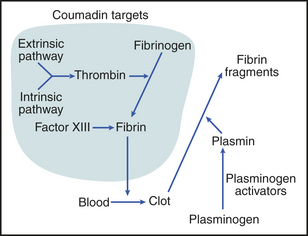25 CASE 25
A 58-year-old man comes to the emergency department complaining of bleeding in his mouth.
PATHOPHYSIOLOGY OF KEY SYMPTOMS
More extensive vascular damage is sealed by the formation of a blood clot. A series of plasma proteins called clotting factors result in the formation of fibrin. Fibrin is polymerized to form a mesh that traps red blood cells and platelets to help form a clot and seal the opening (Fig. 25-1).
< div class='tao-gold-member'>
Only gold members can continue reading. Log In or Register to continue
Stay updated, free articles. Join our Telegram channel

Full access? Get Clinical Tree



